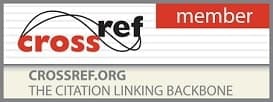- Printed Journal
- Indexed Journal
- Refereed Journal
- Peer Reviewed Journal
P-ISSN: 2394-1685 | E-ISSN: 2394-1693 | CODEN: IJPEJB
Impact Factor (RJIF): 5.38
2017, Vol. 4, Issue 4, Part B
Use of radio for health promotion and behavior change: An analyse
Author(s): Palwinder Singh Bhatia
Abstract:
Health communication is any type of human communication whose content is concerned with health. So health communication can be taken in many forms. When the Office of Medical Applications of Research of the National Institutes of Health issues a practice guideline (in the form of a Consent Development Statement) for the 23,000 Medical practitioners, this too is health communication. Health communication is also the front-page article in the Hindustan Times or a story on the national news about a mysterious new epidemic (e.g., Ebola virus) that serves to put a health concern on the national agenda (Dearing & Rogers, in press; Rogers et al., 1991). These examples suggest that communication is a vital ingredient in almost every form of medicine and health. Often, communication plays the key role in determining whether medical research and health programs that seek to apply research-based knowledge are effective in helping to solve health problems. Communication combines medical / health expertise on the one hand with the public and its health problems on the other. This linking function of health communication is included or implied in a variety of examples provided: patient-doctor communication, media agenda-setting, preventive health campaigns. In this article, I focused on radio campaigns for preventive health, because they are a particularly important type of health communication. A communication campaign through radio (a) is purposeful, intended to cause specific human behavior change; (B) is aimed at a large number of individuals; (C) is conducted within a particular period of time; and (d) An organized set of communication activities is involved (Rogers and Story, 1987). In recent years, communication campaigns have become relatively more effective as the result of the increased use of formative evaluation research (research on an intended audience) to design a campaign’s strategies and to pretest its messages and the segmentation of total audiences into specific sub-audiences, which are then reached with targeted messages, as discussed later in this article.
Pages: 103-105 | 908 Views 293 Downloads
Download Full Article: Click Here
How to cite this article:
Palwinder Singh Bhatia. Use of radio for health promotion and behavior change: An analyse. Int J Phys Educ Sports Health 2017;4(4):103-105.








 Research Journals
Research Journals